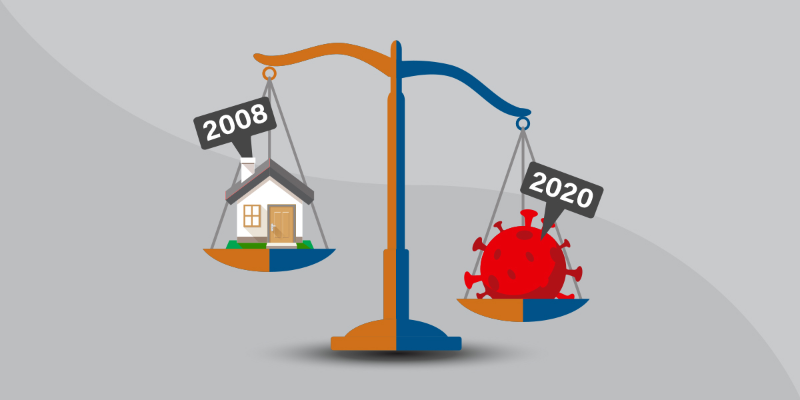2020 Recession: Different Circumstances, Same Consequences

History provides us with all types of comparisons, including recessions. The current recession rocking the U.S. economy has the same dire consequences—rapid decline in gross domestic product and tremendous loss of jobs and income—as the Great Recession of 2008, but differs in other ways.
The key metric that really makes this downturn like no other was the shutdown of non-essential businesses that pushed more than 41 million workers to file for unemployment insurance claims. Putting this into perspective, there were roughly 22.4 million jobs created since the end of the last recession back in June 2009. Those jobs are all eliminated—plus more. American workers have been affected three ways: too paralyzed to work from the fear of getting sick, furloughed from a current job or, worse yet, permanently let go.
High Hopes for Employment
All fingers are crossed for a successful return to work. Most furloughed workers—77 percent—say they expect to get their jobs back. That is significant because it is much better for a worker to return to a job they previously did rather than trying to find a new one. We are likely to see the unemployment rate peak at roughly 20 percent in May and then start to fall. The economy could experience a more V-like recovery if jobs are regained quickly and consumers resume spending, but it’s still too early to tell.
Fast-Acting Government Relief
Another key difference with this recession is the speedy delivery of government support. While there have been some hang-ups with getting the relief funding, the response has been much timelier this time around. It helped that the federal government and Federal Reserve immediately rolled out many of the same programs they used to boost the economy in 2008. Because of this, surprisingly, the S&P 500 is down only roughly 5 percent from the start of the year.
Fear Factor Faceoff
Fear and uncertainly are consistent across both recessions as VIX measures peaked above 80—nearly five times the index’s 10-year average of 16.86 for 2010–2019. VIX, short for the Chicago Board Options Exchange’s Volatility Index, is a popular measure also called the “fear index.”
Recession Comparison: 2008 vs. 2020
| Great Recession of 2008 | Pandemic Recession of 2020 | |
|---|---|---|
| Largest quarterly GDP contraction: | -8.7% | -34.2%* |
| Unemployment peak: | 10% | 14.7%* |
| Fiscal stimulus/relief: | $831 billion in recovery and reinvestment programs | $2.2 trillion CARES Act |
| National debt at start of recession: | $11.9 trillion | $22 trillion |
| Peak VIX: | 80.86 | 82.69 |